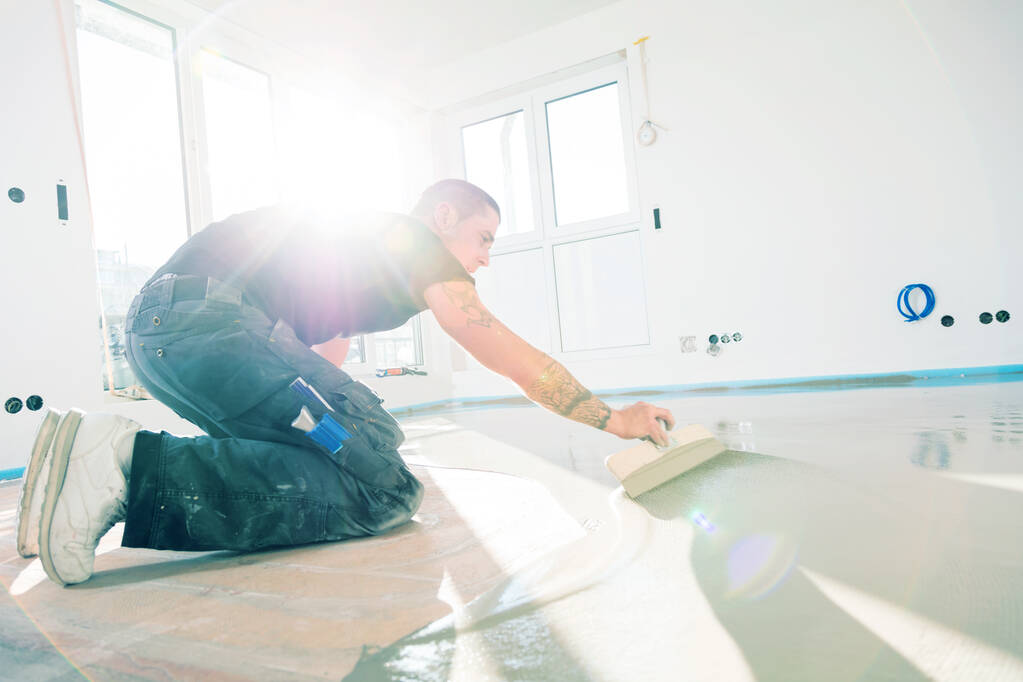When it comes to renovating your home or office space, choosing the right flooring material is undoubtedly important. Whether you opt for hardwood, laminate, vinyl, or carpet, your choice sets the tone for the entire room. However, there’s an unsung hero in the world of flooring installation that often goes unnoticed but plays a pivotal role in the longevity and performance of your floors – underlayment.
Underlayment is a crucial component of any flooring project, yet it’s frequently overshadowed by the allure of the visible flooring material. In this blog, we’ll delve into the significance of underlayment and why it should be considered a hidden hero in flooring installation.
Sound Control and Noise Reduction
One of the primary functions of underlayment is sound control. Without the right underlayment, footsteps can become loud thuds, and other noises such as furniture moving or even dropping items can echo throughout your space. This is especially crucial in multi-story buildings or homes with open floor plans where noise can easily travel. The right underlayment can dampen these sounds and provide a quieter and more peaceful environment.
For instance, if you’re installing hardwood floors in an upstairs room, underlayment can significantly reduce the sound transmission to the rooms below, preventing disturbances to occupants in the lower levels. This makes it not just a hidden hero but also a courteous choice for cohabiting spaces.
Moisture Protection
Moisture is the nemesis of most flooring materials, including hardwood and laminate. If moisture seeps through the subfloor and reaches your flooring, it can lead to warping, cupping, and other forms of damage. Underlayment acts as a moisture barrier, preventing water vapor from rising through the subfloor and affecting your precious flooring. This is especially crucial in areas prone to humidity or moisture, such as bathrooms, kitchens, and basements.
In addition to protecting your flooring, underlayment also safeguards your subfloor from moisture damage, which can be costly to repair or replace. By acting as a moisture barrier, underlayment ensures the longevity of your entire flooring system.
Enhanced Comfort Underfoot
Underlayment isn’t just about protecting your flooring; it also enhances comfort underfoot. Walking on a floor with a good underlayment feels noticeably softer and more cushioned compared to walking directly on a hard subfloor. This added comfort is especially appreciated in areas where you spend a lot of time standing or walking, like kitchens or living rooms.
Moreover, underlayment can help mitigate temperature fluctuations. In colder climates, it can provide a layer of insulation, making your floors feel warmer. In warmer climates, it can act as a thermal barrier, helping to keep your floors cooler.
Subfloor Imperfections
No subfloor is perfectly level, and some may have imperfections such as small bumps, depressions, or cracks. Installing flooring directly over such surfaces can result in an uneven and unattractive finish. Underlayment helps create a smooth and level surface for your flooring, hiding subfloor imperfections and ensuring a uniform appearance.
Furthermore, underlayment can also help prevent the “clicking” sound that can occur with floating floor installations, such as laminate or engineered hardwood. This occurs when the flooring moves against the subfloor, creating noise. A properly chosen and installed underlayment reduces this friction, creating a quieter and more pleasant walking experience.
Extended Flooring Lifespan
Investing in high-quality underlayment can significantly extend the lifespan of your flooring. By providing a protective buffer between your flooring and the subfloor, it reduces the wear and tear caused by foot traffic and furniture. This means your beautiful hardwood, luxury vinyl, or other flooring materials will look better and last longer with the right underlayment.
Moreover, underlayment can also help prevent damage from minor subfloor movements. As buildings settle or experience changes in humidity and temperature, the subfloor can shift slightly. Underlayment helps absorb some of this movement, reducing the risk of your flooring planks or tiles becoming damaged or dislodged.
Ease of Installation
Underlayment not only benefits the flooring but also makes the installation process smoother. It provides a stable and uniform surface for flooring installation, reducing the likelihood of problems like misalignment or gaps. Additionally, some types of underlayment come with adhesive backing or interlocking mechanisms that simplify the installation process further.
Compatibility with Various Flooring Types
Underlayment isn’t a one-size-fits-all solution; it’s designed to cater to different types of flooring materials. Whether you’re installing hardwood, laminate, carpet, or tile, there’s an appropriate underlayment available. This versatility ensures that no matter your flooring choice, you can still enjoy the benefits of sound control, moisture protection, and comfort.

Underlayment may be the hidden hero of flooring installation, but its importance cannot be overstated. It provides sound control, moisture protection, comfort underfoot, and extends the lifespan of your flooring. It also helps create a level surface, simplifies installation, and is compatible with various flooring types. So, the next time you embark on a flooring project, remember that what lies beneath your floors plays a vital role in their performance and longevity. Don’t underestimate the power of underlayment; it’s the unsung hero that ensures your flooring stands the test of time.

